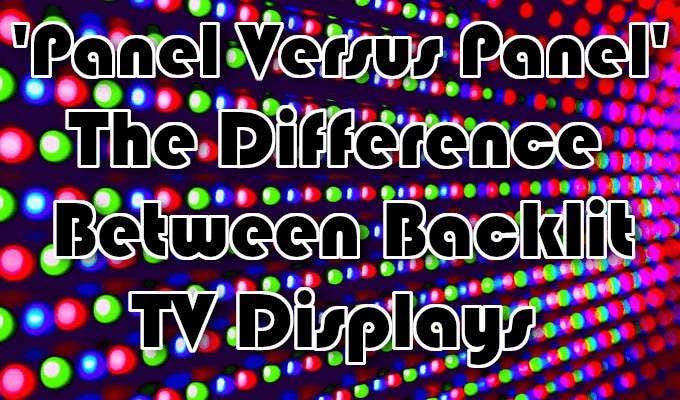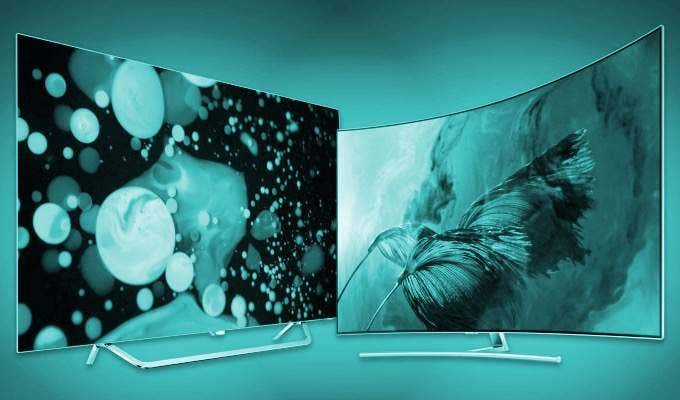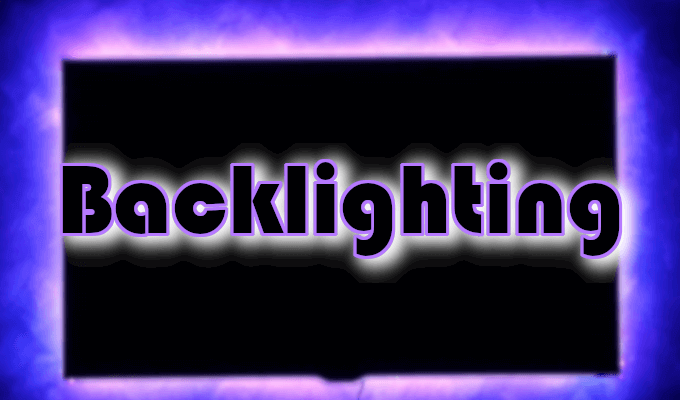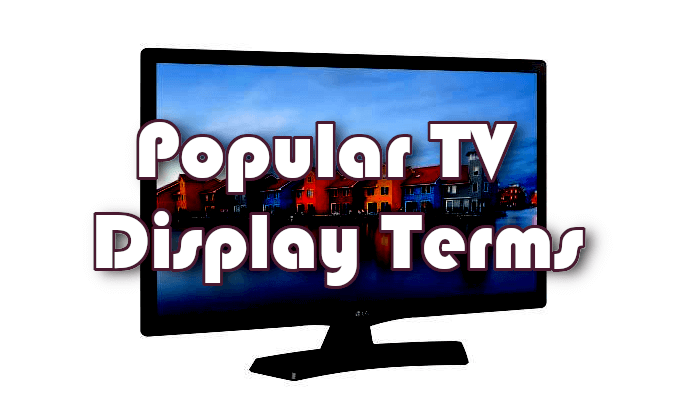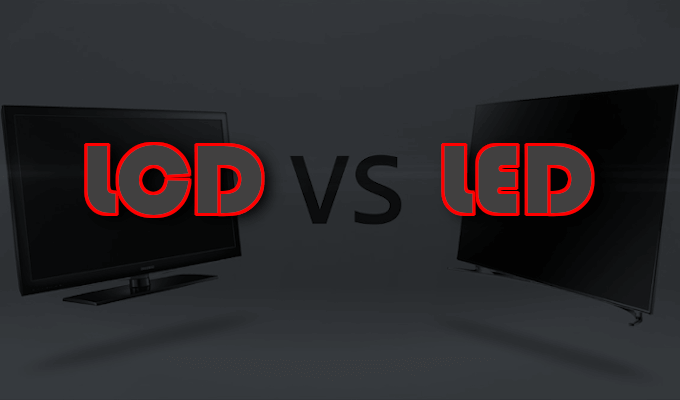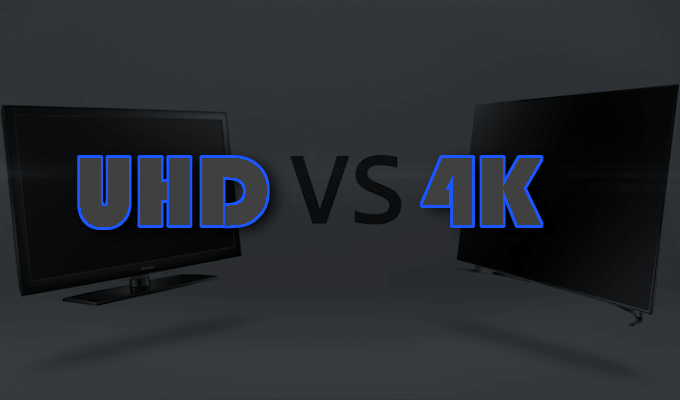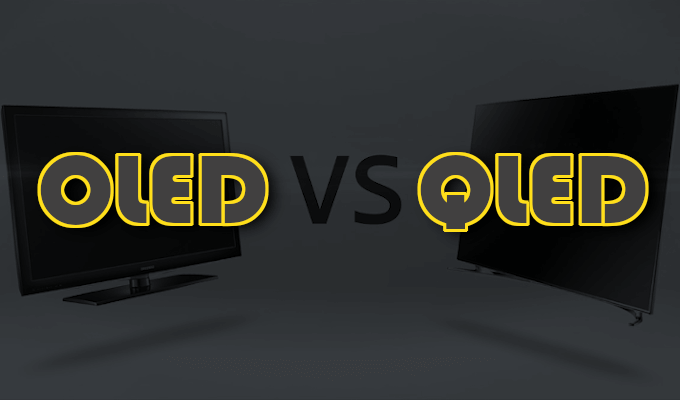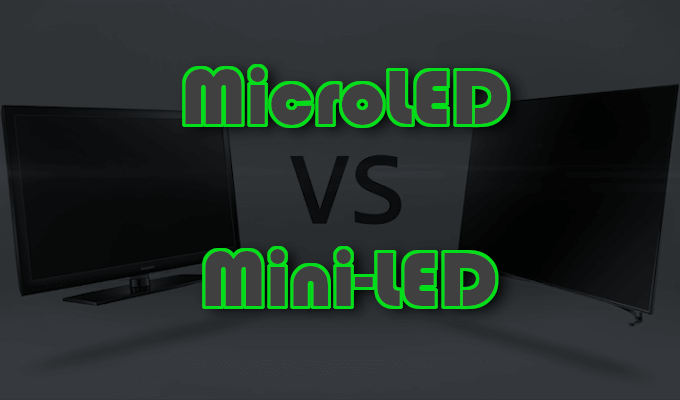When it comes to making major purchases like a brand new flatscreen, you’re likely looking for the best bang for your buck. The only way you can make an informed decision is, well, by being informed. What do the acronyms stand for and which one is the better choice? These are the questions we’ll be answering today by providing a head to head comparison and brief overviews of each commonly used panel display option.
LCD Vs LED: The Difference Between Backlit TV Displays
Before diving into the one versus one comparisons we should go over what backlighting is, the types, what each acronym stands for when pertaining to the display panels, and what they are.
Backlighting
The definition of backlighting is right there in the word: the process of illuminating from the back. In other words, it lights up the images on the TV screen that you’re viewing, creating a glow on the focal point while other areas remain dark. It helps with the brightness, color quality, and contrast so that you can watch your favorite shows. There are three basic forms of illumination that have been used in LCD TVs. Each of them is important, but different.
Cold Cathode Fluorescent Lamps (CCFLs) – CCFLs are an older form of backlighting that have been abandoned in its use. A series of CCFLs would sit across the inside of the TV behind the LCD display. This provided a relatively even illumination giving similar levels of brightness across the screen. CCFLs are larger than the LED arrays used today, and as a result meant that LCD TVs had thicker frames.Full-Array – Replacing the outdated CCFLs, we have a full-array of LEDs across the back of the LCD screen. This provided varying zones where the LEDs gained local dimming, the ability to light up or dim depending on the contrast.Edge Lighting – Edge lighting is similar to full-array except that instead of a wide array of LED zones, LEDs are placed along the top, bottom, and sides of the screen. The LEDs can be configured differently producing varying results in picture quality. The upside to this backlighting is for the manufacturers, as they’re able to make thinner TVs at a lower cost.
Popular TV Display Terms
Liquid-Crystal Display (LCD) – A flat-panel display using the light-modulating properties of liquid crystals. As liquid crystals cannot emit light on their own, a backlight or reflector is used to produce colorful or monochrome images.Light-Emitting Diode (LED) – A semi-conducting light source that will emit light as current runs through it. The energy required for use, in the form of photons, determines the colors emitted.Ultra High-Definition (UHD) – Also known as UHD TV and Super Hi-Vision, is a digital format with an aspect ratio of 16:9.4K Resolution (4K) – A horizontal display of approximately 4,000 pixels originated for the movie projection industry.Organic LED (OLED) – An LED display where the emissive electroluminescent layer, the path where current flows, is a film of organic compound situated between two electrodes.Quantum LED (QLED) – Accurately referred to as Quantum Dot Display, QLED uses quantum dots, which are semiconductor nanocrystals, that can produce pure monochromatic red, green, and blue (RGB) light. They convert the backlight to emit pure RGB which improves the brightness and color gamut of the display. MicroLED – Consists of arrays of microscopic LEDs to form the individual pixel elements. Offers better contrast, response times, and energy efficiency to that of basic LCD technology.Mini-LED – LED-backlit LCDs with mini LED-based backlighting allowing for deeper blacks and higher contrast ratio.
LCD vs LED
As with all of the acronyms on this list, these two are virtually the same thing with a slight variation. An LED TV is just an LED-lit LCD TV, providing similar quality in terms of picture and functionality while consuming less energy in the process. LED TVs also offer more colors, especially when using RGB-LED backlighting, have a higher dynamic contrast, and come in a slimmer frame. For all of these slight perks over the standard LCD panels, LED TVs will cost you a little bit extra. The single major difference can be found in older LCD TVs, which used CCFLs to provide lighting. Nowadays, virtually every TV marketed as LCD is likely to be an LED version thanks to advancements in technology. So, if you’re on the fence between an LCD TV vs LED TV, just check to make sure the LCD TV is no longer using CCFLs. This should alleviate any concerns of going one way or the other.
UHD vs 4K
UHD is 4K – sort of. Today, 4K resolution TVs are all the rage. What had originally been used solely in cinematic projection on the big screen, is now available inside your home. But what if I told you, it’s actually not? The version of 4K used in movie projection puts out a resolution of 4096 x 2160 pixels. This should seem like a no-brainer seeing as 4096 is in fact representative of the 4K found in the name. However, the 4K or 4K UHD resolution, as it is commonly referred to, sits at 3840 x 2160 pixels. This means that the dominant 4K standard we hear about for our televisions is not, in fact, 4K at all. It’s an approximation. Does a few pixels really matter in the grand scheme of things? No, not really. Our eyes can barely process it anyway. However, when you see a TV labeled as UHD vs one as 4K, just know that they’re speaking of the same thing. At least in terms of digital television. Also, 4K is more effective on a larger screen but you’ll notice the difference even more if you get a TV of similar size to the one you’re replacing. 8K won’t become mainstream inside homes for quite a while, so don’t be afraid to splurge a little.
OLED vs QLED
An OLED TV is essentially the successor to the plasma screen. QLED TVs are a rebranding of Samsung’s range of SUHD TVs. Samsung decided that SUHD was either too confusing or not catchy enough for marketing, so they switched it to QLED. The ‘S’ in SUHD didn’t even stand for anything specific. In reality, SUHD isn’t much more than an LCD TV with UHD resolution. There is a slight caveat to what an SUHD actually has that would allow it to stand apart from competitors: nano-crystal technology and Samsung’s own version of High Dynamic Range (HDR), Peak Illuminator Ultimate/Pro. Of course, nano-crystal technology is actually quantum dots, as illustrated in the above acronym overviews. The Pro version of Peak Illuminator offers edge-lit local dimming and can be found in the cheaper QLED/SUHD TVs. Ultimate provides full-array local dimming. Local dimming is an LED TV feature that dims the backlight behind different areas of the screen while black is being displayed. OLED TVs tend to offer a brighter, more colorful, viewing experience and come with options of larger screens than QLED/SUHD TVs. If having punchier visuals is a necessity then OLED wins this faceoff.
MicroLED vs Mini-LED
MicroLED is a new display technology that doesn’t require a backlight the way that regular LCD/LED TVs do. Mini-LED is more of a replacement for LED backlighting used LCD panels. Mini-LED TVs will offer improved contrast ratios and reduced response time for consumers when compared to LCD/LED TVs but don’t stack up to OLED TVs. When it comes to picture quality and contrast, MicroLED is a serious competitor to OLED. This means that the real difference when it comes to MicroLED vs Mini-LED is that Micro-LED is shaping up to be a fully-fledged next generation display of its own. Mini-LED is more likely to be a replacement technology used to enhance already manufactured display technologies. For any TV touting Mini-LED technology, it just means that it’s an LED TV that got an upgrade. A MicroLED panel TV has the potential to be the next “big thing” so making an investment in one today will likely carry you into the future.
